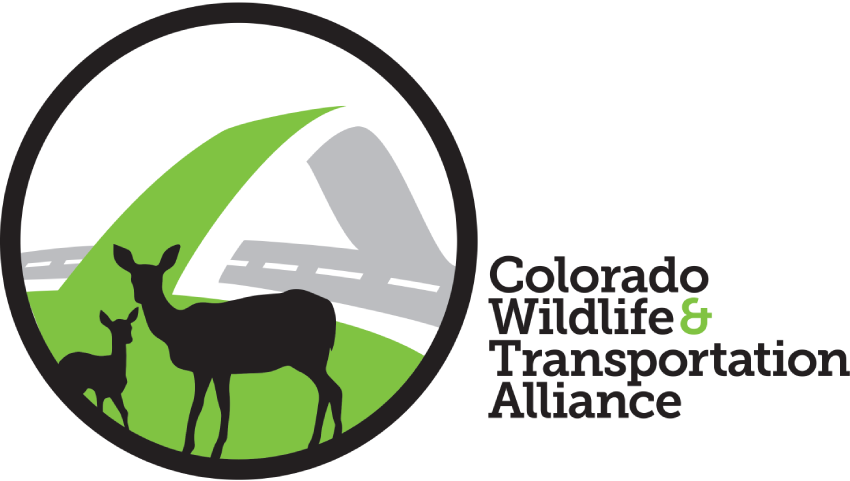
About the Alliance
Frequently Asked Questions
Why do wildlife try to cross human roads?
Wildlife intuitively migrate around the state to find food and water or more favorable
living and breeding conditions.
What can people do to avoid wildlife-vehicle collisions?
While some collisions may be unavoidable, motorists can reduce the likelihood of an accident by taking the following precautions:
- Slow down! Driving slower increases reaction time and reduces the chance of a collision.
- Stay alert while driving at dusk and dawn. This is when many of Colorado’s wildlife are the most active and are likely to be crossing roadways.
- Scan ahead and watch for movement along roadsides. When driving at night, watch for shining eyes in headlights. Always look and be prepared for more than one animal.
- Give warning. When animals are seen on or near the road, slow down or stop (if no other cars are behind you), honk the horn and/or flash headlights. This warns the animal to avoid the road and alerts other drivers to the potential hazard.
- Obey traffic signs. Watch for wildlife warning signs.
Which species are most affected by vehicle collisions?
CDOT maintenance records show species most affected by vehicle collisions are deer, elk, moose, and pronghorns.
Where are high-risk areas for wildlife-vehicle collisions?
Wildlife-related accidents can happen anywhere in Colorado. However, drivers should be especially cautious when traveling through forests and agricultural land, as well as the following “high-risk” areas:
- Interstate 70 (Floyd Hill, Mt. Vernon Canyon and Eagle)
- US 285 (Morrison)
- Highway 160 (Durango to Pagosa Springs and Durango to Mancos)
- Highway 550 (north of Durango and from Montrose to Ouray)
- Interstate 25 (Castle Rock to Larkspur)
- Highway 82 (Glenwood Springs to Aspen)
- Highway 36 (Boulder to Lyons)
- Highway 93 (Golden to Boulder)
Do wildlife use alternative pathways on migration paths?
Research studies show that wildlife populations can adapt to using human-made underpasses, overpasses, wildlife guards, escape ramps, and fenced areas on their migration paths to avoid traffic and possible vehicle collisions.
How can wildlife and human safety be improved?
There are a number of different ways, depending on the location, to mitigate wildlife-vehicle collisions and improve human and wildlife safety. A comprehensive mitigation plan that includes wildlife over/underpasses, fencing, and jumpouts is one way we’ve seen significant reduction in wildlife-vehicle collisions. We’ve compiled a list of resources where you can learn about different mitigation mechanisms in Colorado and their successes.
Check out these tips for staying safe on Colorado’s highways and byways from Colorado Parks and Wildlife.
Do you partner with local schools?
Yes, the Alliance is creating educational materials and a specialized curriculum for Colorado students to teach them about wildlife conservation. Learn More about wildlife conservation education programs from Colorado Parks and Wildlife.
Who should I contact to partner with or join the Alliance?
You can reach out to us at any time by filling out this contact form. We’ll get your question to the right person and get back to you as soon as possible.
